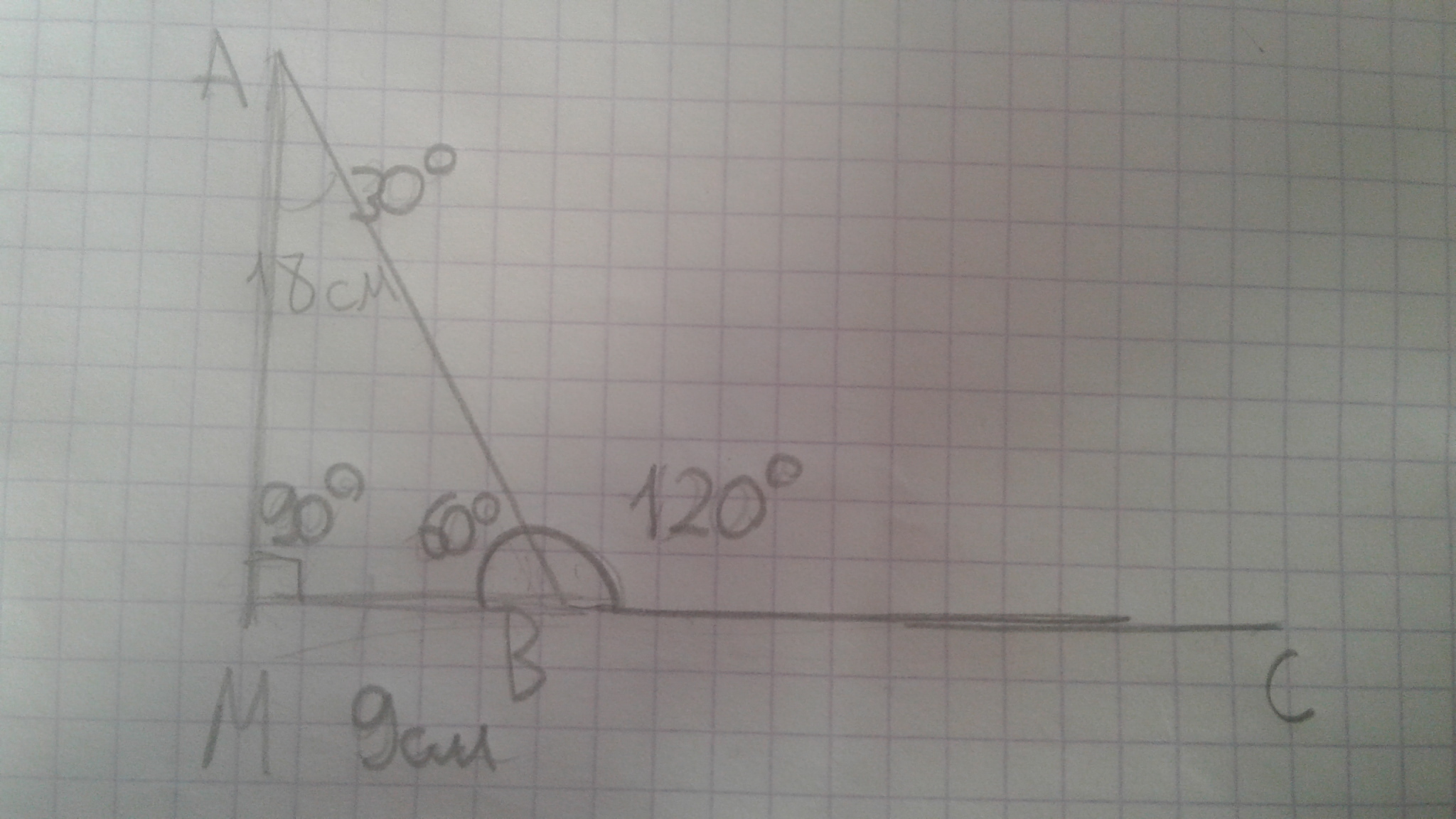Предмет: Математика,
автор: lizashtatnova
Геометрия 7 класс.Решение и рисунок.Задача:Угол АВС равен 120 градусов.Из точки А проведен перпендикуляр АМ к прямой ВС.Найдите длину отрезка ВМ,если АВ=18см.(СРОЧНО,даю 30баллов).
Ответы
Автор ответа:
1
1) проводим перпендикуляр
2) доводим ВС до М
3) АМВ = 90 градусов, т.к угол прямой
4) АВМ=МВС (180 градусов) - АВС (120 градусов) = 60градусов
5) МАВ = 180 градусов - 90 градусов - 60 градусов = 30 градусов
В прямом треугольнике против угла в 30 градусов лежит катет, равный 1/2 гипотенузы.
АВ(гипотенуза) = 18 см.
Прот. Угол в 30 градусов (МАВ) лежит МВ следовательно МВ = 18:2=9 см
2) доводим ВС до М
3) АМВ = 90 градусов, т.к угол прямой
4) АВМ=МВС (180 градусов) - АВС (120 градусов) = 60градусов
5) МАВ = 180 градусов - 90 градусов - 60 градусов = 30 градусов
В прямом треугольнике против угла в 30 градусов лежит катет, равный 1/2 гипотенузы.
АВ(гипотенуза) = 18 см.
Прот. Угол в 30 градусов (МАВ) лежит МВ следовательно МВ = 18:2=9 см
Приложения:

lizashtatnova:
Спасибо огромное
Похожие вопросы
Предмет: Химия,
автор: wr5cpjqb62
Предмет: Математика,
автор: ulaklippert
Предмет: Русский язык,
автор: danil298680
Предмет: Обществознание,
автор: AIS2016
Предмет: Алгебра,
автор: artum9859